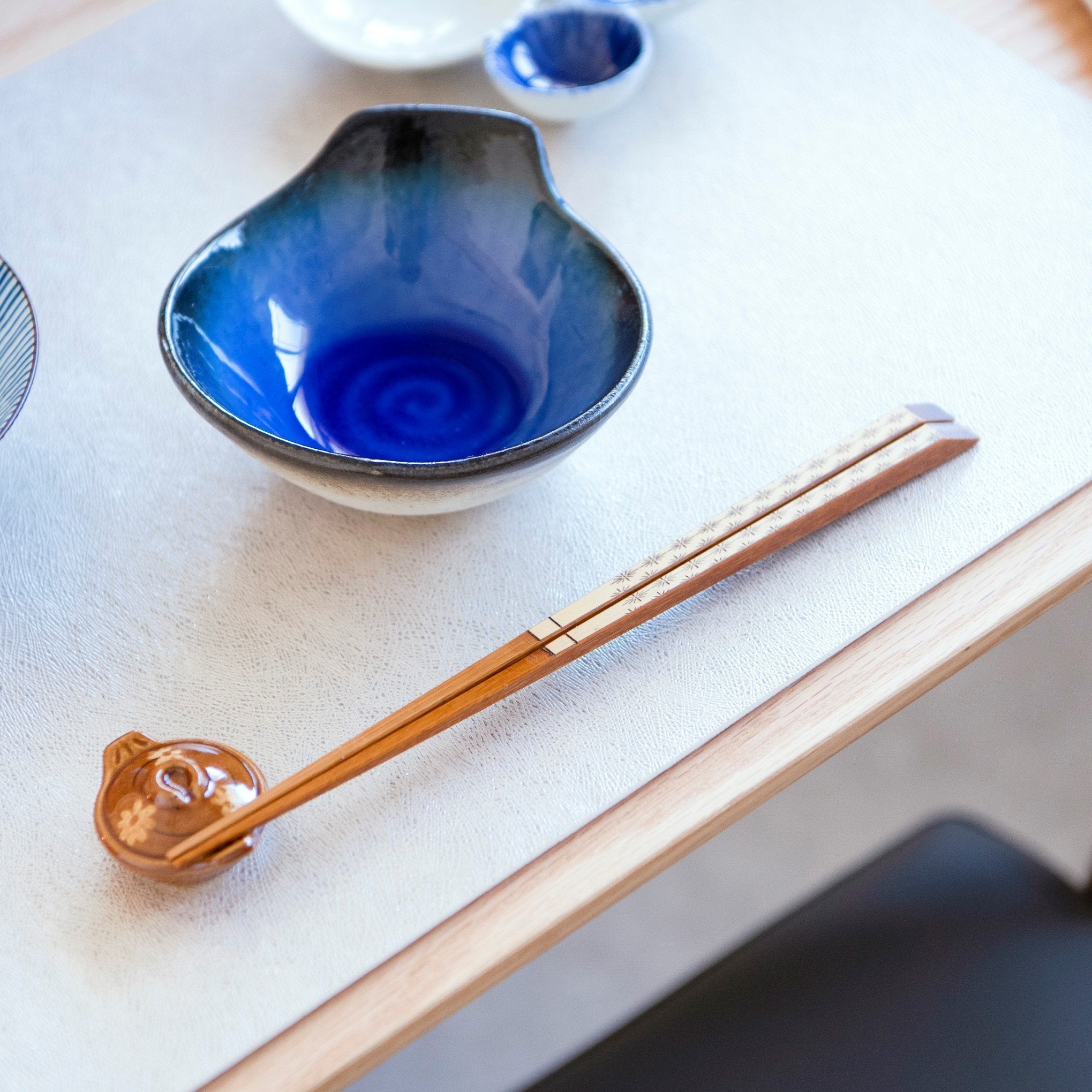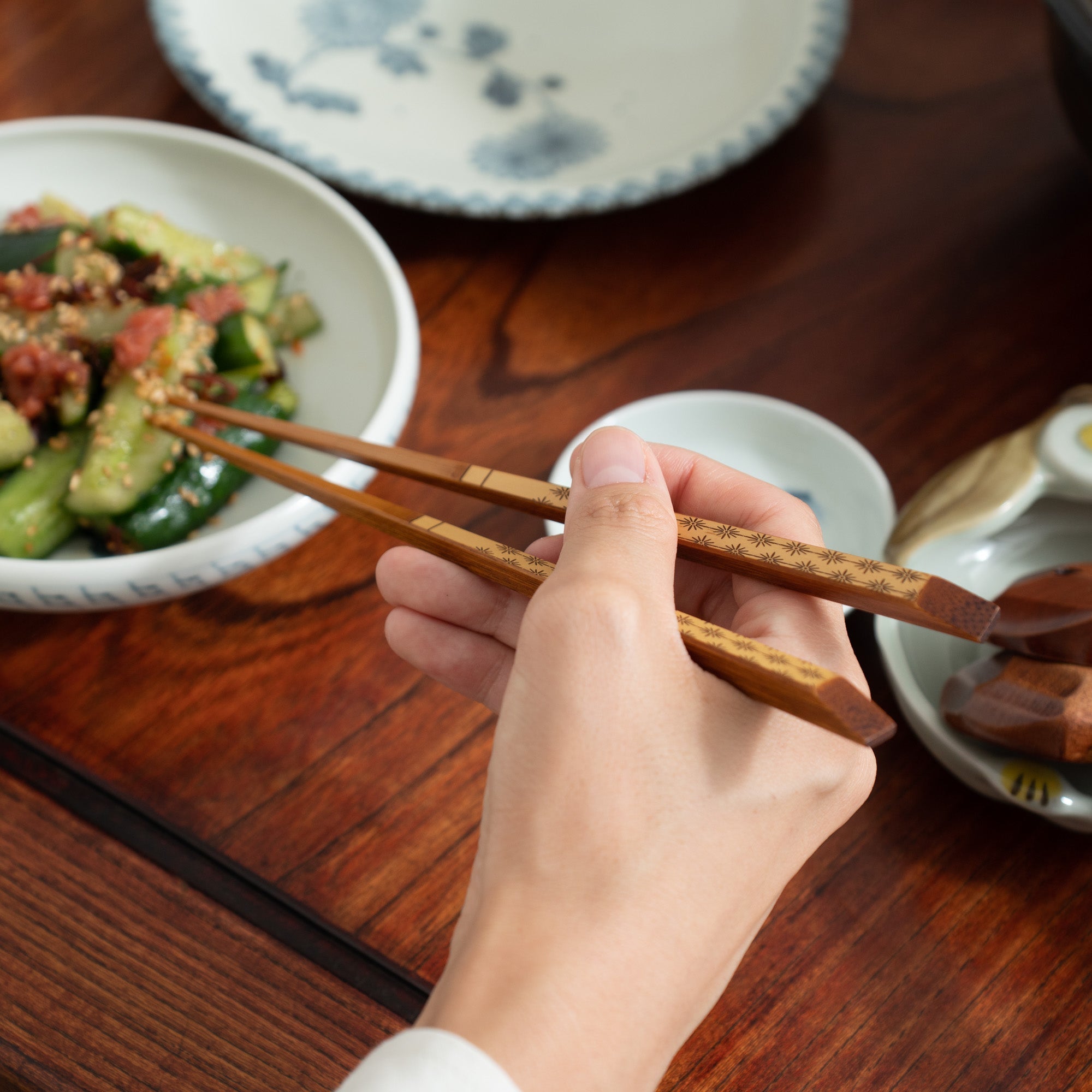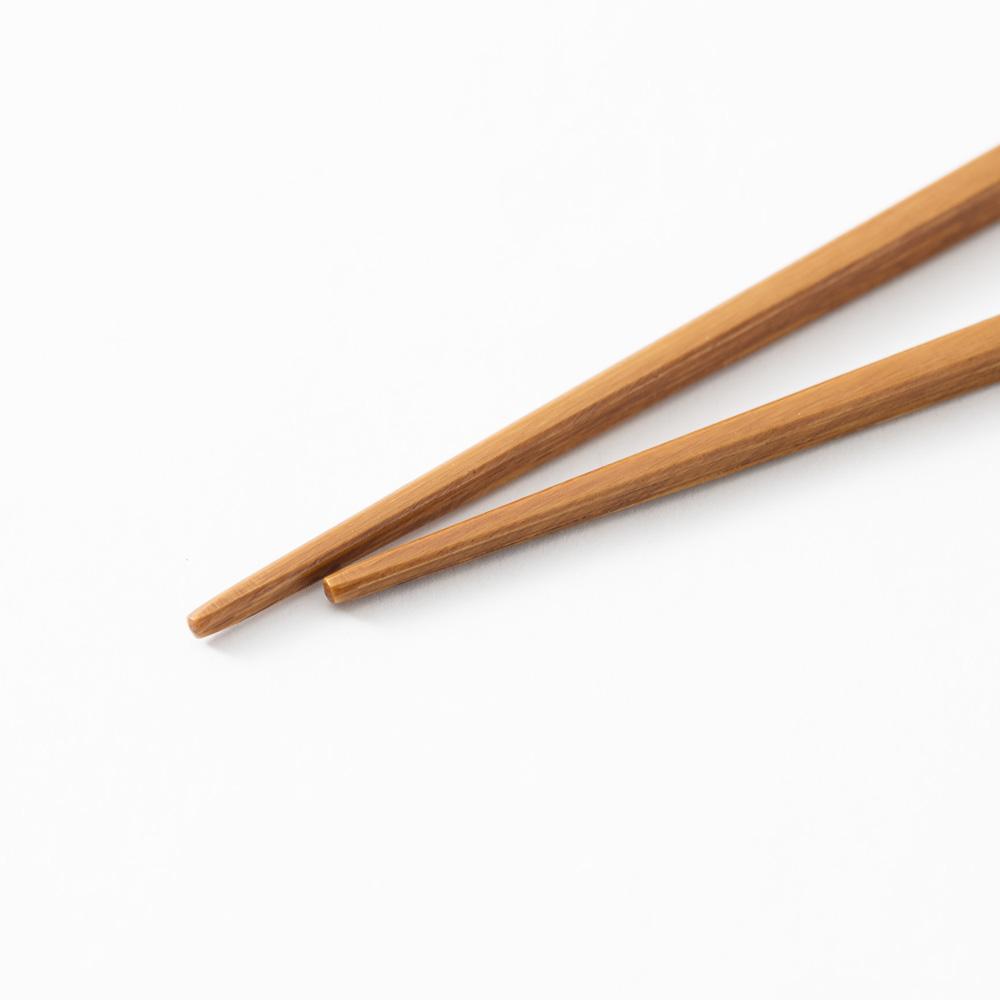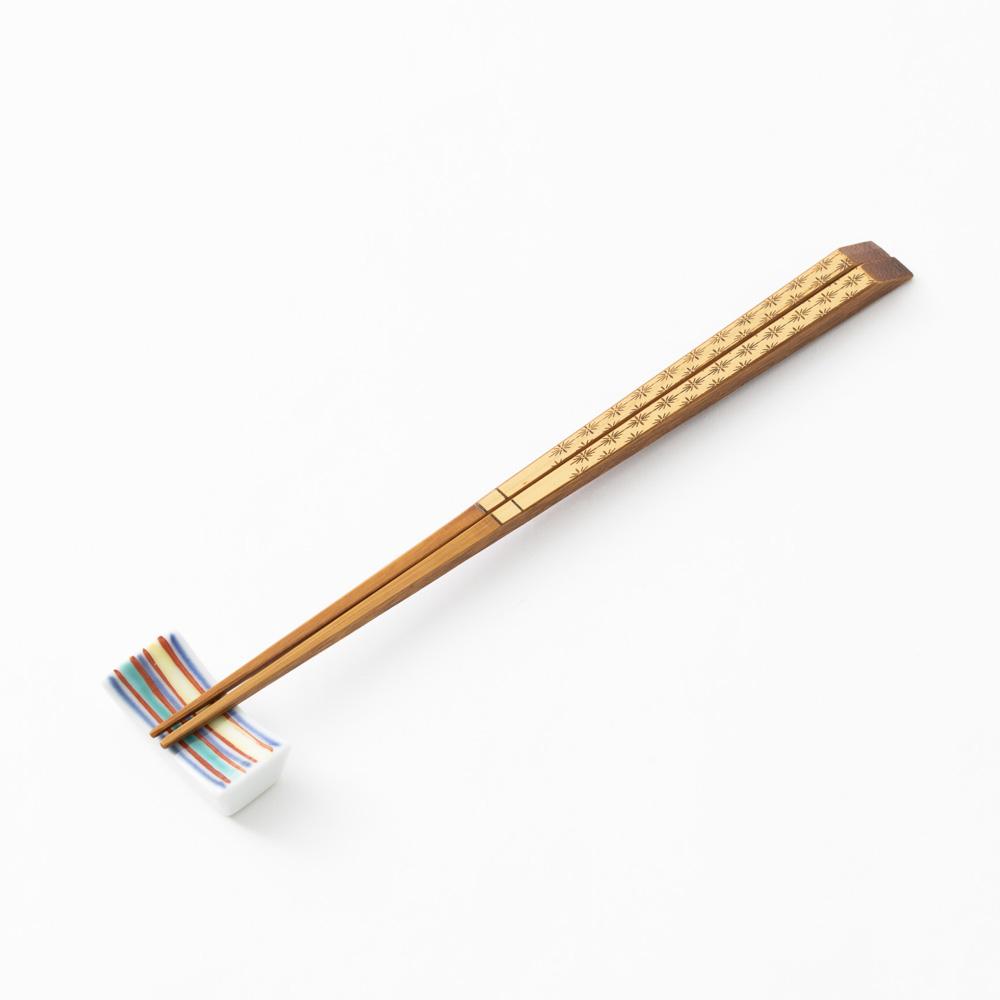









Yamachiku Crystal Lacquered White Bamboo Chopsticks 23cm/9.1in
Estimated Shipping Widget will be displayed here!
These beautiful chopsticks feature crystal patterns adorned on white bamboo, finished with a sleek lacquer coating. The laser-engraved designs add modern precision to the classic bamboo surface.
Moderately light and very easy to hold, bamboo chopsticks offer flexibility and thin tips that make eating effortless. The warm touch and gentle feel of the lacquer further enhance their comfort.
Yamachiku, a manufacturer based in Kumamoto Prefecture, harvests bamboo individually from the surrounding mountains and uses a combination of hand and machine processing to produce purely domestic products.
Recommended for daily use, these chopsticks also make excellent gifts.
PRODUCT DETAIL
- Quantity: 1
- Dimension: 23 cm (9.1 in)
- Material: Bamboo
- Coating: Lacquer
- Origin: Made in Japan
- Brand: Yamachiku
Choose options










Estimated Shipping Widget will be displayed here!
International Shipping
Multiple International Shipping Options
Discounted shipping for over 500000!
Free shipping for over 5000000!
Insured shipping service
Full compensation for any damage during transit.
Made by Japanese craftsmen
Fair Pricing, free Furoshiki wrapping!

